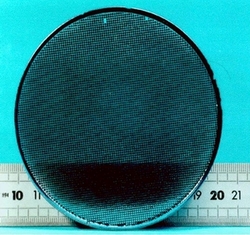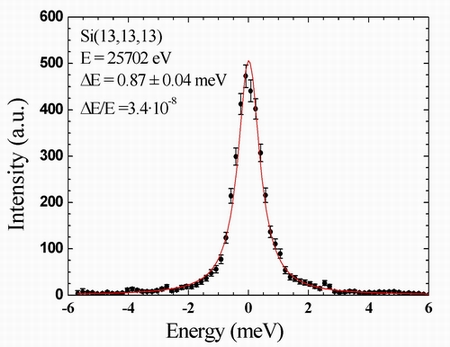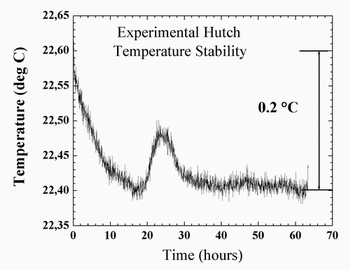- Home
- Users & Science
- Find a beamline
- Electronic structure, magnetism and dynamics
- ID28 - Inelastic Scattering II
- Beamline Layout
- Experimental Hutch 1
- Spectrometer
- Very high energy resolution spherical crystal analyzer
Very high energy resolution spherical crystal analyzer
Although the required energy resolution is the same for the monochromator and the analyser, there is a big difference concerning their angular acceptance. The spatial angular acceptance of the monochromator should be compatible with the divergence of the synchrotron beam, whereas the analyser must have a much larger angular acceptance, which is only restricted by the required Q resolution. An angular acceptance up to 4x10mrad2 is an adequate compromise of Q-resolution and signal maximisation. These constraints necessitate focusing optics. Since it is not possible to elastically bend a crystal without introducing important elastic deformations, which in turn deteriorate the intrinsic energy resolution, one has to position small, unperturbed crystals onto a spherical substrate with a radius, fulfilling the Rowland condition. This polygonal approximation to the spherical shape yields the intrinsic energy resolution, provided the individual crystals are unperturbed and the geometrical contribution of the cube size to the energy resolution is negligible. The solution realised at the ESRF consists of gluing 12000 small crystals of 0.6x0.6x3 mm3 size onto a spherical silicon substrate [1,2]. This procedure, which is described in great detail in the references cited above, yield very good results, and provided the record energy resolution of 0.9 meV, utilising the silicon (13,13,13) reflection order at 25704 eV.

 < P>
< P>
(left) Picture of a 6.5 m crystal analyser. (right) Energy resolution scan from a plexiglass sample at 10 K at Q=10 nm-1 and T=10 K.
Apart from the heavy constraints imposed on the analyser construction, another important ingredient for a good analyser performance is the temperature stability of the analyser. To this purpose, the analysers are actively stabilised utilising the same kind of thermometer-heater unit as for the high energy resolution monochromator. Furthermore, the experimental hutch is as well temperature controlled, thus insuring a very good long-term stability of the analyser system. This is documented in figure below where the typical temperature stability of EH1 and an analyser is reported.


Temperature stability of the experimental hutch EH1 and a crystal analyser.
[1] C. Masciovecchio, U. Bergmann, M. Krisch, G. Ruocco, F. Sette, and R. Verbeni; Nucl. Instrum. Meth. B 111, 181 (1996).
[2] C. Masciovecchio, U. Bergmann, M. Krisch, G. Ruocco, F. Sette, and R. Verbeni; Nucl. Instrum. Meth. B 117, 339 (1996).



